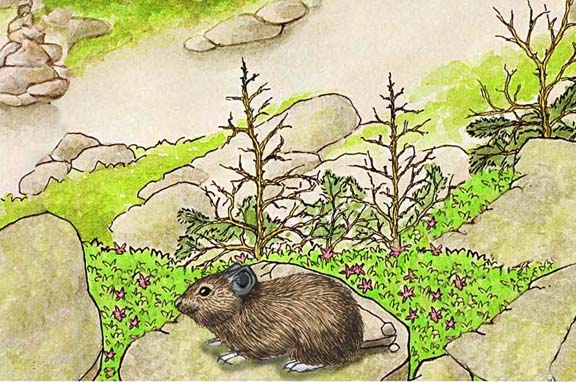

They are found in the mountains of North America, Europe and Asia.
They live in rocky places in cold, mountainous areas.
They are small (less than a pound) with little, round bodies, little, round ears and no tail. They are covered with a warm, brown fur. They are in the same family as the rabbit, so they have 6 front snipping teeth (incisors) for cutting grass and plants (4 on top and 2 on bottom).
They are active during the day (diurnal) finding food in and around the rocks. They have a shrill, whistling call. They live in small groups (colonies) with family members who call back and forth to each other to warn each other of danger and mark their territories.
They eat plants (herbivores) like grass, leaves and twigs.
Predators that eat them are hawks, eagles, weasels, fox and martens.
Females nest in a rocky crevice. They are pregnant for about 1 month (gestation) and have 1 - 6 babies.
They may live up to 7 years in the wild. They are listed as Lower Risk - least concern.
Kingdom: Animalia
Phylum: Chordata
Subphylum: Vertebrata
Class: Mammalia
Order: Lagomorpha
Family: Ochotonidae
Genus: Ochotona
Species: Ochotona princeps
When you research information you must cite the reference. Citing for websites is different from citing from books, magazines and periodicals. The style of citing shown here is from the MLA Style Citations (Modern Language Association).
When citing a WEBSITE the general format is as follows.
Author Last Name, First Name(s). "Title: Subtitle of Part of Web Page, if appropriate." Title: Subtitle: Section of Page if appropriate. Sponsoring/Publishing Agency, If Given. Additional significant descriptive information. Date of Electronic Publication or other Date, such as Last Updated. Day Month Year of access < URL >.
Amsel, Sheri. "Pika (American)" Exploring Nature Educational Resource ©2005-2024. December 13, 2024
< http://www.exploringnature.org/db/view/Pika-American >

